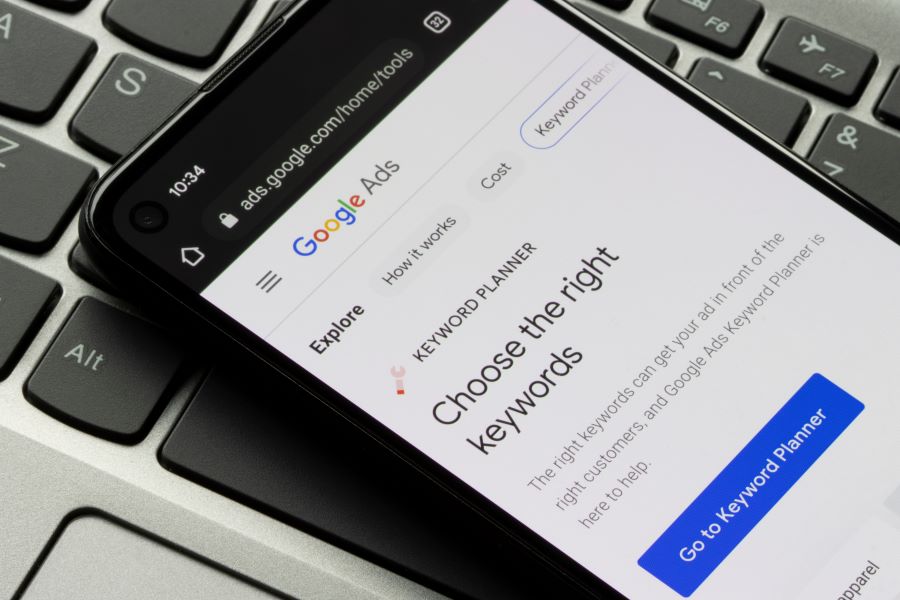Make the Most of Your Paid Ad Budget in 2023

Transitioning your business to the online environment makes digital marketing crucial. It offers a cost-effective, efficient, and measurable way to reach your target audience and promote your brand, products, and services.
There are two main approaches to digital marketing. The first is SEO, which is widely used by startups and businesses. It involves optimizing your website for search engines like Google and Bing, without incurring additional costs. By doing so, you can rank higher in search engine results pages (SERPs) and attract organic traffic when users search for relevant keywords.
Alternatively, you can consider launching a pay-per-click (PPC) campaign. This strategy allows for faster results in digital marketing, where you create ads and pay a fee whenever a user clicks on them. If this is something you’d like to implement opt to talk to a PPC agency or look for digital marketing consultants to get an overview.
What is PPC?
PPC involves creating and displaying online ads for your brand to target your desired audience. With PPC, you pay a fee each time a user clicks on one of your ads. It can be seen as a means of purchasing website visits or traffic, as opposed to acquiring them organically through SEO efforts.
How to Spend Your PPC Marketing Budget Wisely
As an entrepreneur launching a startup or managing a small business, you understand that your company doesn’t have substantial cash flow at this stage. This emphasizes the importance of every marketing decision you make and how it can impact your business performance.
Furthermore, since PPC advertising involves costs, it becomes essential for you to be prudent in allocating your marketing budget. To assist you in making informed choices for your business, here are some valuable tips.

1. Assess the Value of Your Lead
Assessing the value of each lead can serve as a reliable metric for determining the appropriate marketing budget for your PPC campaign. This knowledge enables you to make well-informed decisions regarding your paid advertising strategy, ensuring that you don’t exceed the value of your leads in advertising costs.
To calculate your lead value, begin by determining your average cost per lead. You can use the following formula:
Cost per lead = Total cost to acquire leads ÷ Total number of leads acquired
For instance, if you spent a total of $10,000 to acquire 100 leads, your cost per lead would be $100.
Now, let’s assume that out of those 100 leads, 20 people converted and purchased your $450 phone, resulting in $9,000 in sales.
To compute your lead value, divide your total sales by the total number of leads. Applying this formula to the example above:
Lead value: $9,000 ÷ 100 = $90
By determining that each lead is worth $90, you can identify any excessive expenditure in acquiring a single lead. To address this issue, it becomes crucial to optimize your advertising spending and ensure that it remains within the range of your lead value.
2. Utilize the Display Network
Implementing PPC for promoting your products or services may appear straightforward. However, for beginners, it can be hard to navigate and implement various paid advertising models without leveraging AdWords management services.
To simplify the process, it is recommended to start by utilizing the Google Display Network. This network reaches a vast audience of over 90% of internet users worldwide, making it an excellent choice for startups and small to medium-sized businesses seeking to enhance brand awareness.
One advantage of the Google Display Network for smaller businesses is its lower cost per click (CPC) compared to search ads. According to WordStream, the average CPC for display ads is $0.63, while search ads typically cost $2.69 per click.
However, it is important to manage your expectations when using the Google Display Network. While it offers cost advantages, it may not always deliver significant improvements in conversion rates.
Display ads primarily target the top-funnel market, aiming to create awareness of your brand and offerings among users. The primary benefit of display ads is generating leads, and it is rare for a user who views and clicks on a display ad to immediately convert it into a sale.
3. Focus on Targeted Keywords
The world of PPC is highly competitive, with small businesses and large corporations from various industries vying for visibility. One of your competitors is likely a big company with a substantial marketing budget.
Given this reality, it’s important to strategize wisely, considering that you may not be able to outbid them on broad and popular keywords. In this situation, one effective approach is to target niche or long-tail keywords.
By bidding on more specific keywords, you can reach your intended audience without directly competing against larger corporations. This approach also increases the likelihood of achieving a higher click-through rate (CTR) for your website.
Moreover, opting for less competitive keywords can lower your cost per click (CPC). Since fewer businesses are targeting these particular keywords, you won’t need to increase your bid to have your ads displayed.

4. Write a Compelling Ad Copy
Once you feel more confident in running paid ad campaigns, you may consider launching search ads. When creating these ads, there are several factors to consider, such as your targeted keywords and budget. Additionally, since search ads primarily consist of text, it is crucial to ensure that your ad copy is compelling enough to attract user clicks.
First and foremost, focus on crafting attention-grabbing headlines. This component serves as the initial impression users have of your search ads and greatly influences how they perceive and respond to them.
Ensure that your headline highlights the unique benefits users will experience by choosing your brand. Avoid using generic advantages that are commonly found in other ad copies. Differentiate your brand by incorporating benefits that are exclusive and distinct.
Furthermore, it is important to align the message conveyed in your headline with the description of your ad. Consistency is key, as mixed messages may confuse users and lead them to disregard your ad, seeking alternatives instead.
Including a clear call to action in your ad copy is also essential. Ending your ad description with a specific call to action helps increase user engagement. Avoid using generic examples that may deter users from engaging with your ad.
Remember, it is crucial to ensure that your ad copy is compelling enough to entice users to click. By doing so, you can enhance your click-through rate (CTR) and maximize the value of every cent spent on your ad.
5. Optimize Your Landing Page
After a user clicks on your ad, it’s crucial to direct them to a well-designed landing page that delivers on the promise made in your ad. This ensures consistency in messaging and increases the likelihood of converting leads into customers.
Optimizing your landing page also has the benefit of saving you money. When your landing page provides a great user experience, it earns favor with search engines like Google. As users prefer clicking on ads that offer a superior experience, Google rewards you with a higher quality score.
A higher quality score, ideally above 7, reduces the need to bid as much on your target keywords. This is because Google trusts that you will deliver an exceptional ad and user experience, eliminating the need to rely solely on financial resources to demonstrate relevance and authority.
To optimize your landing pages, consider the following strategies:
- Keep your headlines concise and impactful to communicate your offer.
- Craft compelling copy that persuades and engages visitors.
- Incorporate relevant images that enhance understanding and appeal.
- Utilize eye-catching and enticing calls to action (CTAs).
- Highlight your unique selling points to differentiate your brand.
- Improve the loading speed of your landing page for a seamless experience.
- Optimize your form fields to streamline the conversion process.
- Conduct A/B testing on your landing pages to identify effective variations and refine your approach.
6. Harness the Power of Remarketing
Remarketing is a paid advertising technique that enables you to reconnect with users on the Google Display Network who have previously interacted with your brand through your website or mobile app. It involves strategically targeting these individuals with ads across the internet until they are ready to make a purchase or avail of your services.
By employing remarketing, you can retarget users who have visited your website and shown interest in the products or services you offer. Once you identify their specific areas of interest, you can promote relevant offers to them through display ads.
For instance, if a user clicked on a dress listed on your website but didn’t make a purchase, you can create a display ad featuring the same product and display it to them as they browse other websites and platforms. With effective remarketing, they may be enticed to not only buy the dress but potentially explore additional products as well.
Remarketing can also be used to continue selling products to existing customers. Building upon the previous example, once a user has made a purchase, you can show them display ads featuring related items. This can include accessories that complement the dress they bought or other clothing items such as shoes and jackets that pair well with their original purchase.
When implementing remarketing, you don’t need to invest significant effort in convincing users to convert since they are already familiar with your brand and have demonstrated interest in your offerings. You simply need to provide a gentle push to encourage them to complete the transaction and make a purchase.
Beyond its conversion potential, remarketing is also a cost-effective strategy. Similar to regular display ads, remarketing ads typically have a lower cost per click (CPC) compared to search ads.
Therefore, if your website generates substantial traffic (exceeding 1,000 visits), incorporating remarketing into your advertising strategy is highly recommended. This approach can help you achieve higher conversion rates without exerting excessive effort or expenditure. To further explore ways to increase conversion rates with this strategy, it would be best to consult it with your conversion optimization agency.
7. Beware of Excessive Ad Delivery
When configuring your PPC ads, it’s important to set an average daily budget per ad group to effectively manage your monthly expenses. However, there’s a risk of over-delivery if one of your ad groups performs exceptionally well. In such cases, Google may display your ad more frequently, surpassing your daily budget allocation.
Failure to recognize this situation can quickly deplete your monthly budget, leaving insufficient funds to continue running your ads for the remainder of the month. Consequently, you may miss out on valuable prospects and traffic to your website.
To prevent this scenario, it is crucial to regularly monitor your ads at least 2-3 times a week. This proactive approach allows you to identify any ad groups that are exceeding their allocated budget.
If you observe an ad group surpassing your daily budget, you have several options to address the issue. You can reduce the budget for other ads or your entire campaign, reallocating funds towards the high-performing ad group. This adjustment ensures that the successful ad group can continue to run frequently and for a more extended period.
By closely monitoring your ad performance and taking prompt action when necessary, you can effectively control your ad spending and maximize the impact of your PPC campaigns.

Key Takeaway
While leveraging paid ads for business promotion offers numerous advantages, it’s crucial to recognize that PPC success is not guaranteed. It often entails a process of trial and error to discover the most effective strategy for your specific company. However, once you find the optimal PPC approach, you can sustain continuous growth while making efficient use of your marketing budget.







